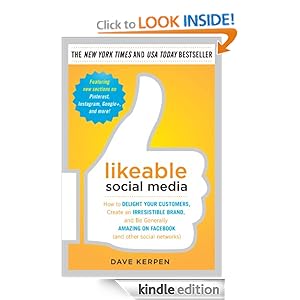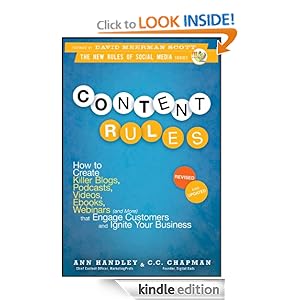This post may contain affiliate links. Please read my disclosure for details.
Happy Monday!
Last week, my social media class had the wonderful opportunity of having Nate Bagley as our guest.
Who is Nate Bagley (@bigbags)? Nate currently runs the Loveumentary Podcast (and blog!), a podcast that believes “True Love exists… you just need to listen.” The Loveumentary, which seeks to understand true love through interviews with married couples who have found lasting love, has been featured on The Good Men Project, ABC News, Fast Company, and more. Prior to leaving the security of employment to pursue his passion and share it via social media, Nate worked in web, SEO / SEM, and related areas.
I want to share a few highlights that stick out in my mind from his Skype with our class.
- People and brands shouldn’t be afraid to take risk, be vulnerable, and to open up about who they are – Nate said that he learned through his experience building the Loveumentary, that his audience began to really grow when he opened up and was vulnerable and honest about his true feelings and concerns when it came to love. People can relate, they have the same concerns or face the same problems. And that has helped him connect with his audience and build engagement in ways he wasn’t previously able to.
- Use Metrics to be Responsive to Your Audience – This ties in to #1: When I asked Nate about what metrics are most important to him, he reminded students it depends on your goals. One thing Nate tracks closely on his blog is “time on page.” He wants to make sure people are enjoying his content, and sticking around to read it. He knows that if people aren’t sticking around, his content isn’t appealing to them. If they are sticking around, it is. He can use this knowledge to find out what resonates with his audience, so he can produce more of what works.
- Find your passion and find a need that you have – chances are others have it too. And if you are passionate about that topic, your chances of success go way up!
- Students today should be blogging, getting their name out there, and interacting with their field WHILE IN SCHOOL – Nate reminded our class that networking and building connections can be invaluable for the soon-to-be graduate. Students should be blogging, and building themselves on social media he said. In fact, he said he wished his professors had made him blog.
We learned a lot from Nate, and greatly appreciated his insight and passion. The Loveumentary is a great project and a great example of using social media to reach people, share a passion, and build an audience by helping others and providing a valuable service.
If you’re interested in checking out the Loveumentary (@loveumentary), you can find it on iTunes, and all other major podcast streams, or listen at Loveumentary.com.
Best of Luck to Nate and the Loveumentary!




